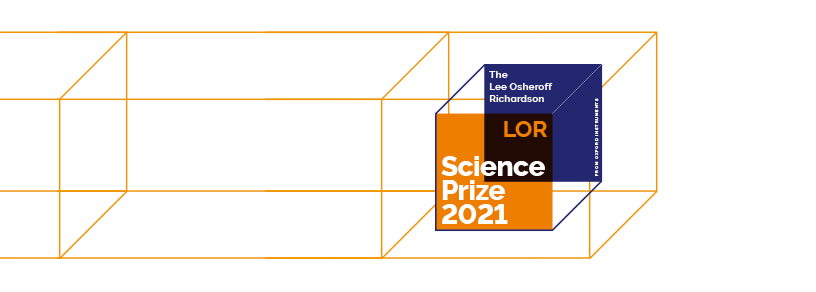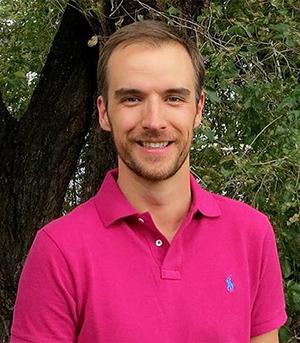Applications
 Part of the Oxford Instruments Group
Part of the Oxford Instruments Group
Expand
Collapse


Dr Ramshaw is one of the most gifted young experimentalists currently active in the field of strongly correlated electron systems. Ramshaw’s technical contributions to condensed matter physics have focused on improving measurement techniques for pulsed magnetic fields up to 100 T, and on improving resonant ultrasound spectroscopy for low-temperature applications. He has applied these techniques to solve significant problems in both high-temperature and unconventional superconductivity. Most notably he has used quantum oscillation measurements to provide the first direct observation of the effects of quantum criticality on the electronic normal state of cuprate superconductors, and to determine that the Fermi surface of the cuprates is not reconstructed by magnetic order in high fields.
The technique developments made by Ramshaw have had an impact beyond his own research – he has taken part in many collaborative pulsed-field research projects including the investigation of 2-D electrons in graphene and oxide heterostructures, symmetry breaking in heavy Fermions, and unconventional thermodynamics in topological semimetals. His most recent technique advancement, for which he was awarded a $430,000 development grant at Los Alamos National Labs, was the design and construction of an all-digital pulse-echo ultrasound apparatus for use in pulsed magnetic fields up to 100 Tesla. This has increased the relatively small number of thermodynamic probes available in these extreme magnetic fields, and will be particularly helpful for studying phase transitions in metals where magnetization signals can be swamped by noise and transport signatures are difficult to interpret.
Quasiparticle mass enhancement approaching optimal doping in a high-Tc superconductor. Science, 348:317–320, 2015:
(B. J. Ramshaw, S. E. Sebastian, R. D. McDonald, James Day, B. S. Tan, Z. Zhu, J. B. Betts, Ruixing Liang, D. A. Bonn, W. N. Hardy, and N. Harrison)
Eight years after the discovery of quantum oscillations (and thus a Fermi surface) in YBCO, measurements were still confined to a narrow region of chemical composition and transition temperatures near Tc = 60 Kelvin. This was mostly due to the extreme fields required to suppress superconductivity as the chemistry is tuned towards the maximum transition temperature of 95 Kelvin. By designing and building a resistivity experiment that was capable of taking extremely high quality data up to 92 Tesla, Brad was able to measure quantum oscillations in YBCO samples with Tcs up to 92 Kelvin. In addition to completing the description of the underdoped Fermi surface in YBCO, these measurements revealed that the quasiparticle effective mass is greatly enhanced as one moves across the phase diagram towards optimal doping. The coincidence of optimal doping with a strongly enhanced mass is the hallmark of a superconducting pairing mechanism that is driven by quantum criticality. Previous evidence for quantum criticality in the cuprates had been indirect, such as the linear slope of the high-temperature resistivity – the enhanced effective mass represents the first evidence for quantum criticality in the metallic ground state (i.e., with superconductivity removed by the magnetic field). Brad was the driving force behind all aspects of this experiment: he prepared the c-axis electrical contacts on the samples to maximize signal; he devised a way of reducing sample inhomogeneity to better observe the quantum oscillations; he redesigned the entire scheme for making transport measurements in the 92 T magnet at Los Alamos, including single-point grounding for the entire apparatus and the use of new custom-built amplifiers that worked in the large fringe fields of this magnet; he analyzed the data taking particular care to account for the background since the oscillatory signal was particularly small near optimal doping due to the increased effective mass; he created all the figures and wrote the manuscript in consultation with his co-authors. The re-design of the measurement apparatus has had a lasting legacy at the NHMFL, with many publications by magnet-lab users (including publications number 2 and 4 on the publication list) taking advantage of the new technology.
Avoided valence transition in a plutonium superconductor. Proceedings of the National Academy of Sciences, 112(11):3285–3289, 2015:
(B. J. Ramshaw, Arkady Shekhter, Ross D. McDonald, Jon B. Betts, J. N. Mitchell, P. H. Tobash, C. H. Mielke, E. D. Bauer, and Albert Migliori)
Superconductivity in heavy-Fermion superconductors is almost exclusively discussed in terms of spin fluctuations from nearby magnetic phases. The fact that the highest-Tc heavy Fermion superconductor – PuCoGa5 with a Tc of nearly 20 Kelvin – shows no sign of magnetism whatsoever has therefore represented a puzzle for this field: without magnetism, what could be driving the superconductivity? Brad and co-workers used resonant ultrasound spectroscopy (RUS) to discover that valence fluctuations may be the driving force behind the superconductivity in PuCoGa5. RUS is a little-known technique in condensed matter physics, but is particularly powerful in that it can determine all elastic moduli of a material in a single measurement. This project represented a major step forward for the technique, which previously had difficulty obtaining noise-free data to the lowest temperatures, and which suffered from computational difficulties in determining the elastic moduli for crystal systems with low (tetragonal or lower) symmetry. Brad built on previous innovations he took part in (see publication 15) and designed a brand-new RUS apparatus that could take artifact-free data down to 4He temperatures. This was particularly challenging because the element plutonium is involved: once the apparatus was placed in the glovebox no further modifications or fixes could be made. Brad also completely re-designed the data analysis procedure for obtaining elastic moduli: he wrote a very fast implementation of a genetic algorithm in c++ that solved a couple of outstanding technical challenges for the technique, namely the unknown boundary conditions and the missing-resonance problems. In addition to building the experimental apparatus and writing the data analysis software, Brad recognized their data as a strong signature of valence fluctuations and wrote the manuscript. Brad and collaborators are now using the improved RUS technique to search for broken symmetries in materials to low temperatures and high magnetic fields.
Angle dependence of quantum oscillations in YBa2Cu3O6.59 shows free-spin behaviour of quasiparticles. Nature Physics, 7(3):234–238, Mar 2011:
(B. J. Ramshaw, Baptiste Vignolle, James Day, Ruixing Liang, W. N. Hardy, Cyril Proust, and D. A. Bonn)
The Fermi surface of underdoped cuprates – as observed by quantum oscillations in high magnetic fields – is an order of magnitude smaller than one might expect from band-structure calculations. This suggests that some sort of 'reconstruction’ is at work—the band-structure surface is cut up and reorganized into smaller pieces by a new periodic potential such as that created by a charge or spin-density wave (CDW or SDW). It was initially put forward that the Fermi surface of YBCO was reconstructed by a SDW, despite the fact that no SDW order had been observed at low fields. It was thought that a SDW perhaps emerged in the high-field state, and an initial study of the electronic g-factor of YBCO using angle-dependent quantum oscillations suggested the presence of a high-field SDW. Brad had taken concurrent angle-dependent quantum oscillation measurements on YBCO, but embarked on a more ambitious analysis of the data. The challenge was that only a few quantum oscillations are observable across the available field range, and the complicated nature of the reconstructed Fermi surface can obscure the true physics. Brad developed a new method for analyzing angle-dependent quantum oscillations which made use of a genetic algorithm to fit the multi-dimensional data set in amplitude, field, and angle all simultaneously. By doing this he unambiguously showed that the g-factor is close to 2 – the value of free electrons – which strongly rules against SDW order and suggest another mechanism for reconstruction, namely CDW order. One year later CDW order was indeed discovered in YBCO. As a PhD student Brad played a key role in all aspects of this experiment: creating c-axis resistance contacts for high-signal-quality measurements; designing and implementing the genetic algorithm in c++; analyzing the large and complicated data set; and writing the manuscript.